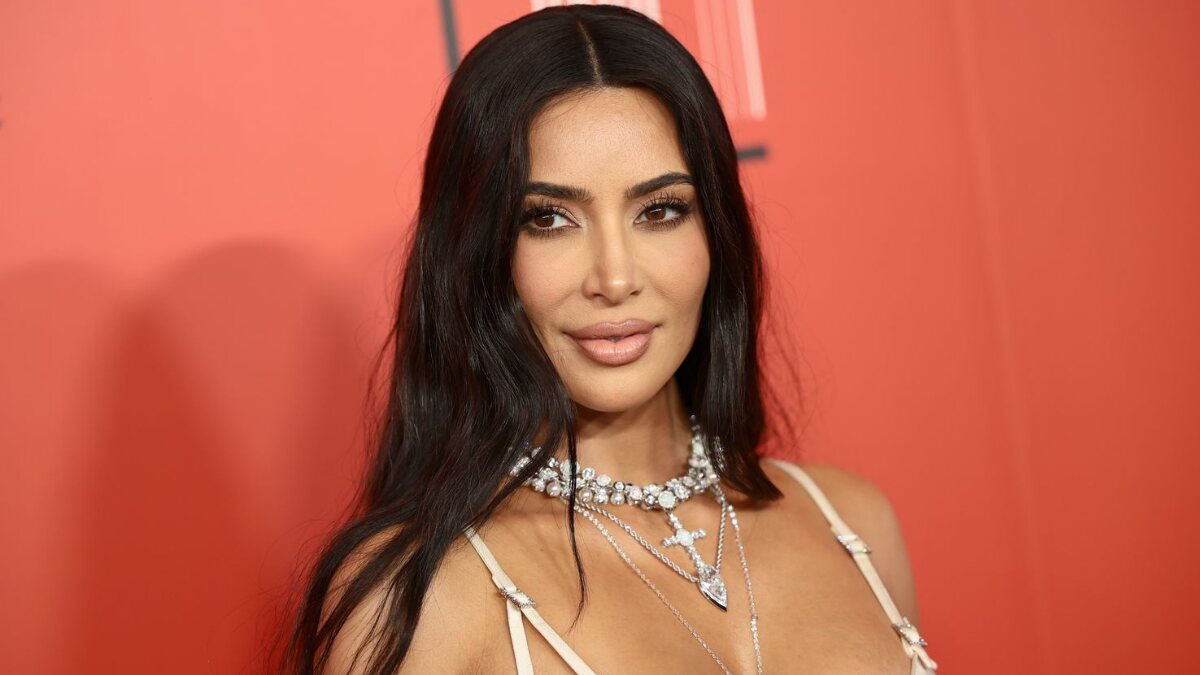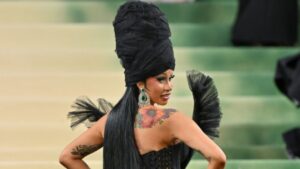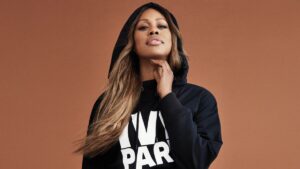Kim Kardashian’s rise is one of the most studied brand evolutions of the 21st century. Once known primarily as a Hollywood socialite and reality TV personality, she has transformed herself into a global entrepreneur with ventures spanning fashion, beauty, fragrance, and digital media. Her name is now associated with companies valued in the billions, including SKIMS, which recently reached a $4 billion valuation.
Her ascent began in the late 2000s, during the golden age of reality television — a time when “Keeping Up with the Kardashians” transformed family drama into must-watch television. But while many saw a guilty pleasure, Kim saw an incubator for brand identity. She mastered the art of keeping her name in the cultural conversation, pivoting effortlessly from TV screens to social media feeds just as Instagram and influencer marketing were taking over.
Today, with hundreds of millions of followers and a net worth estimated at over $1.7 billion, Kim’s story is more than celebrity intrigue. It’s a case study in how strategic visibility, product diversification, and timing can turn personal fame into one of the most valuable brands in the world.
From Socialite to Strategist — Kim’s Brand Genesis
Early Fame in a Pre-Social Media Era
Before the era of Instagram filters and TikTok trends, celebrity visibility was a very different game. In the mid-2000s, the “paparazzi economy” thrived — candid shots sold to glossy magazines for tens of thousands of dollars, and the “celebrity gossip era” shaped public perception more than any self-published content ever could. Into this ecosystem stepped Kim Kardashian, initially known as a close friend and stylist to heiress Paris Hilton.
Their nights out in Los Angeles became tabloid staples, with photographers waiting outside clubs to capture every outfit, every interaction. Media visibility wasn’t something a celebrity controlled directly; it was mediated through magazines, entertainment shows, and gossip blogs. Still, Kim understood the value of being seen — and being seen consistently.
While most in her position enjoyed the perks of fleeting fame, Kim treated it as reconnaissance. She studied how stories spread, how images became viral (in the pre-social media sense), and how sustained presence could build name recognition. This early exposure wasn’t accidental background noise — it was the foundation of a strategic approach to fame that would later thrive in the digital era. She learned the rules of the old game so she could rewrite them when the media landscape shifted.
The Reality TV Launchpad
When Keeping Up with the Kardashians premiered in 2007, it was billed as lighthearted family entertainment — a peek into the glamorous and occasionally chaotic lives of the Kardashian-Jenner clan. But behind the playful banter and dramatic plotlines, the show was quietly functioning as one of the most effective brand-building platforms in modern media.
Each episode offered hours of screen time, not just for Kim, but for every family member. Viewers got to know them as distinct personalities — Kourtney, the laid-back pragmatist; Khloé, the outspoken humorist; Kris, the business-minded matriarch. This constant exposure meant each became a “mini-brand” under the same umbrella, with Kim often at the center.
The magic wasn’t only in the personalities but in the seamless blending of life and commerce. A trip to launch a boutique became an episode. A family vacation doubled as a photoshoot. Fans weren’t watching product placements — they were watching the family’s actual lives, which happened to feature the products they owned or endorsed.
For Kim, it was a real-time laboratory. She could test how audiences reacted to her style changes, ventures, and public statements, then adjust. The show didn’t just make her famous — it gave her the data, reach, and narrative control to turn fame into influence.
Mastering the Art of Visibility in the Attention Economy
Social Media as a Business Tool, Not Just a Platform
For Kim Kardashian, Instagram, Twitter (X), and TikTok aren’t just places to post selfies — they’re finely tuned engines for direct-to-consumer marketing. Every image, caption, and story is part of a broader content curation strategy designed to keep her audience both engaged and primed for the next launch.
She strikes a careful balance: enough behind-the-scenes moments to feel relatable, but wrapped in an aspirational lifestyle that keeps followers inspired. One day it’s a raw, makeup-free video at home; the next, a high-gloss campaign shoot for SKIMS. That contrast is deliberate — it humanizes her while reinforcing her position as a luxury brand.
Her engagement strategy goes beyond likes and comments; it’s about making followers feel like insiders. Product drops are teased like secrets, campaigns unfold in real time, and feedback loops directly into future launches. For Kim, every post is a transaction in trust — and trust converts.
Viral Moments as Strategic Assets
Kim Kardashian has long understood that in the attention economy, visibility is currency — and not all of it has to be carefully scripted. Some of her most enduring brand boosts came from moments that others might have tried to bury. The infamous “Break the Internet” Paper magazine cover in 2014 wasn’t just a viral sensation; it was a masterclass in merging shock value with high-fashion aesthetics, cementing her as both pop culture provocateur and style icon.
Even controversies — from wardrobe choices to relationship headlines — have often been reframed as opportunities. A spike in media coverage becomes a chance to spotlight a product launch or philanthropic initiative. Memes, whether flattering or not, are often reposted or winked at on her channels, signaling self-awareness. By treating unexpected virality as brand fuel rather than damage, Kim turns fleeting moments into lasting equity — proof that control isn’t always about prevention, but redirection.
Turning Fame into a Product Portfolio
KKW Beauty and the Power of Exclusivity
When Kim Kardashian launched KKW Beauty in 2017, she didn’t follow the traditional department store route. Instead, she built the brand around a limited release strategy, offering products in small, highly anticipated drops sold exclusively online. This scarcity wasn’t accidental — it created urgency, drove instant sellouts, and turned each launch into an event.
The brand’s luxury positioning was reinforced through sleek packaging, premium formulas, and curated collections that reflected Kim’s signature aesthetic. Campaigns often featured her sisters or other celebrities, tapping into influencer collaboration as a built-in engine for social proof. Every shared post, review, or paparazzi shot with the products became part of the marketing loop.
By controlling distribution and bypassing traditional retail, Kim kept both the narrative and the margins in her favor. In the crowded beauty industry, KKW Beauty stood out not by being everywhere, but by being just out of reach — an allure that made customers click “buy” before the products disappeared.
SKIMS — Building a Billion-Dollar Apparel Brand
In 2019, Kim Kardashian launched SKIMS with a simple but transformative idea: shapewear should be functional, comfortable, and available for everybody. Where legacy brands often catered to a narrow range of sizes and tones, SKIMS entered the market with an emphasis on inclusivity — offering an extensive size range and shades designed to match diverse skin tones.
The brand’s campaigns reflected that philosophy, featuring models of all shapes, ethnicities, and ages, creating instant resonance with a wider audience. While SKIMS competes with industry heavyweights like Spanx and Savage X Fenty, its performance-focused design — buttery-soft fabrics, seamless construction, and versatile styles — quickly set it apart.
Beyond shapewear, SKIMS expanded into loungewear and basics, blurring the line between undergarments and everyday wear. This adaptability helped turn it from a niche brand into a lifestyle label. Within just a few years, SKIMS reached a multibillion-dollar valuation — proof that when a brand listens to overlooked consumers, it doesn’t just fill a market gap; it redefines the category.
Expanding Beyond Fashion and Beauty
Kim Kardashian’s brand empire doesn’t stop at clothing racks or beauty counters. Over the years, she’s moved into fragrances, mobile gaming, and original media projects — each chosen to complement, not dilute, her core identity. The KKW Fragrance line, for instance, leveraged her association with luxury and glamour, offering sculptural bottles as much as art pieces as perfume vessels. Her mobile game, Kim Kardashian: Hollywood, tapped into the early 2010s app boom, turning an aspirational lifestyle into interactive entertainment for millions.
These ventures reveal a clear pattern: Kim enters categories at the crest of cultural momentum. The app launch coincided with peak mobile gaming, while fragrance drops aligned with a broader influencer-led beauty surge. Not every move is equally enduring — fragrances offer high margins but face saturation, while mobile games are susceptible to short attention cycles. Yet each project reinforces her skill in market timing, ensuring that when she steps into a new arena, it feels both relevant and inevitable.
Business Moves Behind the Scenes — The Kris Jenner Factor
Behind Kim Kardashian’s global empire is Kris Jenner, whose celebrity management instincts rival those of any seasoned corporate executive. More than a mother, Kris has been a strategist, ensuring that Kim’s ventures are built on solid business foundations rather than fleeting opportunities.
From the outset, Kris emphasized equity retention. Instead of signing short-term endorsement deals, she guided Kim toward partnerships and licensing deal structures that granted her partial ownership or creative control. This approach meant that every new brand was not just a paycheck but an asset that could grow in value over time.
One standout example was the sale of a minority stake in KKW Beauty to Coty for $200 million — a deal that injected capital and resources while keeping decision-making power firmly in Kim’s hands.
Kris’s style blends negotiation skills with brand protection. She knows that the Kardashian name is its form of equity, and she is selective about projects to ensure it remains strong. This combination of long-term vision and disciplined deal-making has turned family fame into a durable, multi-billion-dollar business framework — proving that behind every polished campaign is a carefully engineered business move.
Reputation Management and Brand Resilience
Kim Kardashian has mastered the art of turning potential setbacks into strategic advantages. In an industry where public opinion shifts overnight, she approaches controversy as a chance to reset the narrative rather than retreat. Viral missteps often become self-aware social media moments, diffusing criticism and keeping her relatable.
Her philanthropic work, particularly in criminal justice reform, adds depth to her public image. High-profile cases she’s supported have generated headlines in respected outlets, balancing entertainment-focused coverage with socially impactful stories.
Kim also employs calculated PR moves — from giving exclusives to trusted media to aligning major product launches with heightened public attention. This blend of vulnerability, purpose-driven work, and media savvy ensures she remains relevant and trusted.
Rather than damage control alone, her approach is reputation architecture: building a brand durable enough to weather controversy while using it as fuel for long-term influence.
How Kim Stacks Up Against Other Celebrity Entrepreneurs
Comparing Brand Models
Kim Kardashian’s brand strategy stands apart even when measured against other celebrity entrepreneurs like Kylie Jenner, Rihanna, and Gwyneth Paltrow. Kylie’s cosmetics empire is a case study in niche domination — focusing almost exclusively on beauty, scaling quickly, and leaning heavily on trend-driven products. Rihanna’s Fenty brand combines music star power with product-led innovation, positioning inclusivity as its central value proposition. Gwyneth Paltrow’s Goop, meanwhile, thrives on a tightly curated lifestyle niche, blending wellness, content, and luxury retail.
Kim’s approach is broader: a diversification model that spans shapewear, beauty, fragrance, media, and digital ventures. While her products are important, the growth is personality-led — her public image drives the consumer connection as much as the products themselves. This breadth carries more risk but also greater resilience, allowing her to pivot when one category cools. The result is a brand architecture designed for longevity, with multiple pillars supporting her global influence.
Diversification vs. Niche Domination
Where many celebrity entrepreneurs stake their fortunes on a single category, Kim Kardashian has built her success through brand diversification. Her ventures — from SKIMS and KKW Beauty to fragrances, apps, and media projects — demonstrate multi-sector influence designed to withstand market shifts. This celebrity portfolio strategy means no single product line defines her; instead, each brand reinforces and cross-promotes the others.
In contrast, peers like Kylie Jenner or Gwyneth Paltrow excel in niche domination, where laser focus allows deep market penetration but can make adaptation harder when trends evolve. Rihanna’s Fenty brands strike a middle ground, expanding across beauty and fashion but staying anchored in inclusivity.
What I Learned from Meeting Kim Kardashian
I met Kim Kardashian at a SKIMS preview in Los Angeles, expecting the kind of whirlwind energy often associated with celebrity events. Instead, she moved through the room with calm precision — greeting people by name, asking thoughtful questions, and listening intently.
Up close, her business demeanor was unmistakable. She didn’t just pose for photos; she leaned into conversations about fabric quality, retail strategy, and customer feedback as if she were a brand founder in a boardroom, not a pop culture icon at a launch party.
When a buyer mentioned potential distribution challenges, she didn’t defer to her team. She countered with a clear, measured solution, steering the discussion toward long-term positioning. It was subtle but decisive — a reminder that her empire isn’t built on fame alone.
In that moment, it was clear: Kim’s presence isn’t just magnetic — it’s operational. She’s the CEO in the room, even when no one’s calling her that.
The Next Chapter — Where Kim’s Brand is Headed
If Kim Kardashian’s past strategy is any indication, her next chapter will be as calculated as it is ambitious. With SKIMS and her beauty ventures thriving, a move into Web3 — from branded NFTs to virtual fashion lines — would align perfectly with her digital-first strategy. She’s already mastered the art of monetizing attention; the metaverse could simply be the next stage.

The health and wellness space is another natural fit. With her influence in lifestyle and bodywear, expanding into supplements, fitness tech, or holistic wellness could broaden her reach while deepening brand trust.
Philanthropy may also take center stage. Her work in criminal justice reform hints at a long-term vision for a legacy that extends beyond commerce — a celebrity legacy rooted in impact as well as income.
Whatever direction she takes, one constant is her skill in brand evolution. Kim’s greatest strength is timing — entering markets when they’re ripe, and exiting before they plateau. That instinct is what will keep her brand not just current, but enduring.
Lessons from a Name That Became a Global Asset
Kim Kardashian’s journey from L.A. socialite to billion-dollar business mogul is more than a celebrity success story — it’s a blueprint for navigating the modern marketplace. She’s shown that media mastery isn’t about being everywhere at once; it’s about being in the right places, with the right message, at the right time.
Her career illustrates the power of personal branding when it’s treated as an evolving asset rather than a static image. From reality TV to social media dominance, beauty lines to shapewear, every move has been intentional, layered, and interconnected. The lesson for entrepreneurs? Diversify, but do it with purpose.
Kim’s resilience in the face of public scrutiny also underscores a truth about modern entrepreneurship: reputation is as much a currency as revenue. By pairing calculated risk-taking with a commitment to relevance, she’s built a brand that can weather shifts in both culture and commerce.
In the end, her greatest product isn’t any single venture — it’s the enduring value of her name. And in today’s economy, that might just be the most powerful brand asset of all.
Nishant Wagh is the founder of The Graval and a seasoned SEO and content strategist with over 15 years of experience. He writes with a focus on digital influence, authority, and long-term search visibility.















6 thoughts on “How Kim Kardashian Turned Her Name Into One of the Most Valuable Brands in the World”